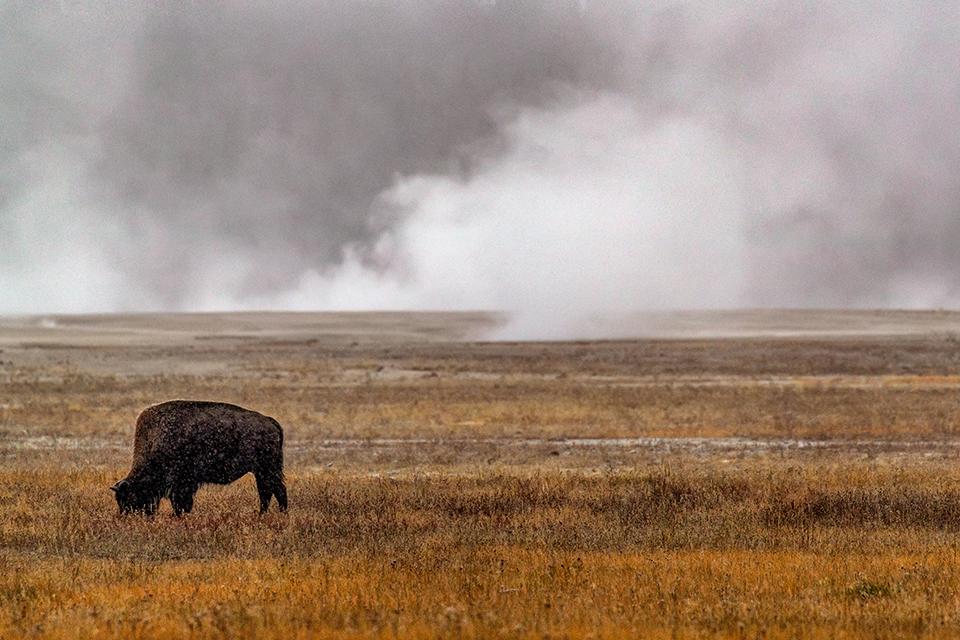
Grazing in an autumn snow storm, Yellowstone National Park / Rebecca Latson
After so many “notables” quiz and trivia pieces, I thought I’d just drop in a “regular” quiz on which you can test your national parks knowledge. How much do you think you know about the parks you’ve visited that might show up as questions here? Maybe you’ll learn something new. Try the quiz first before checking the answers at the bottom.
1. How many of you have visited Yellowstone National Park and seen a herd of bison, or experienced a bison jam? True or False: you can tell a bison’s mood by looking at its tail.
a) True
b) False
2. According to the Instagram account for the Lewis and Clark National Historic Trail (@lewisandclarknht), saltpeter was one of the medical supplies used by Lewis and Clark during their expedition to the Pacific coast. “Also known as niter or nitrate of potash,” saltpeter is an ingredient in:
a) tooth powder
b) gunpowder
c) foot powder
d) laxatives
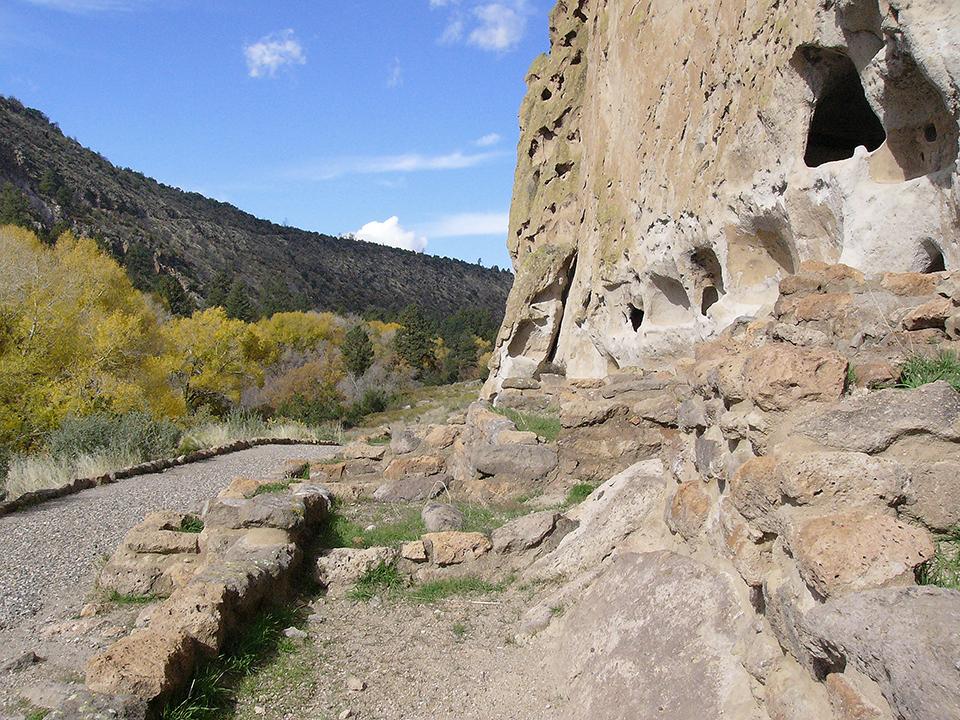
Long House, Bandelier National Monument / National Park Service
3. If you happen to be visiting Bandelier National Monument in New Mexico, you might notice that the cliff dwellings are only on one side of the Canyon. This is because of:
a) Water
b) Ease of access
c) Sunlight
d) Food
4. According to an Instagram post by Point Reyes National Seashore (@pointreyesnps), coho salmon numbers in the local creeks are having a great spawning season because of all the rain the local creeks have received. Female cohos lay their eggs in a special nest called a _____.
a) Hollow
b) Nidus
c) Nuzzle
d) Redd
5. While visiting Yosemite National Park, you might see some interesting seed pods that look like they have come straight out of The Invasion of the Body Snatchers. They are actually milkweed seed pods. True or False: milkweed is toxic to eat.
a) True
b) False
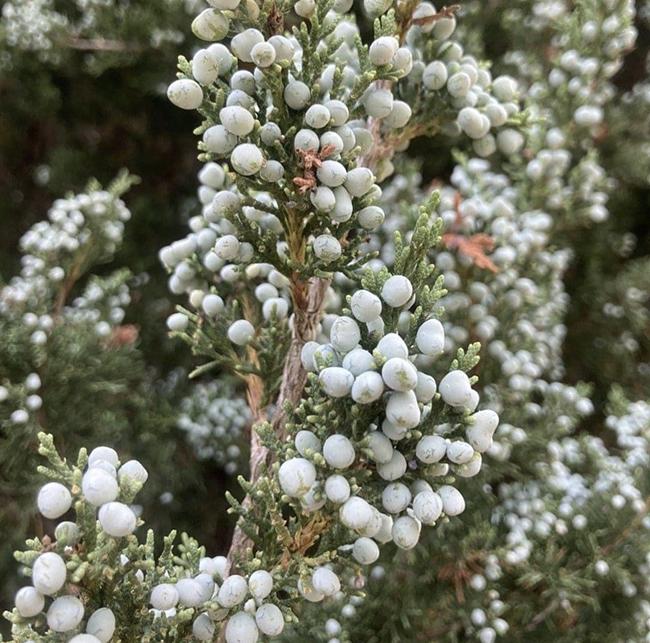
Juniper berries, Cape Cod National Seashore / NPS - O. Burke
6. A visit to Cape Cod National Seashore might put you in close proximity to these white berries you’ll see all over the cedar trees. These are called juniper berries. True or False: juniper berries are not berries.
a) True
b) False
7. According to an Instagram post by @greatsmokynps, Great Smoky Mountains National Park is home to a population of about _____ black bears.
a) 950
b) 1,200
c) 1,900
d) 2,000

Some odd-looking speleothems hanging from the ceiling of Lehman Caves, Great Basin National Park / Rebecca Latson
8. Take a look at the cave formations (speleothems) coming from the ceiling of Lehman Caves in Great Basin National Park. These formations are nicknamed ____.
a) Cave turnips
b) Cave parsnips
c) Cave beets
d) Cave potatoes
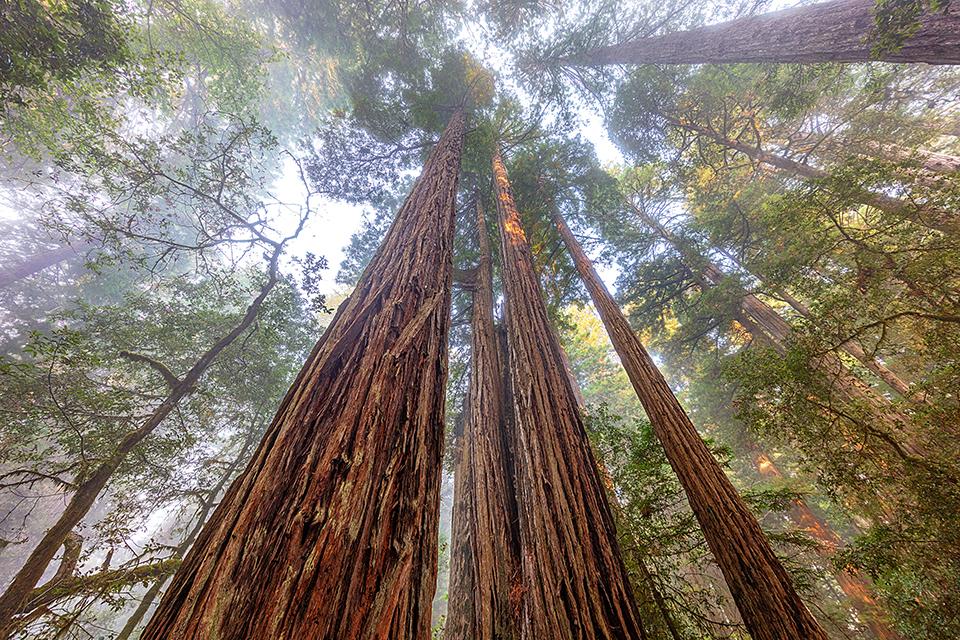
Tree tops in the clouds, Jedediah Smith Redwoods State Park, Redwood National and State Parks / Rebecca Latson
9. Coast redwoods are famous all along the California coast – except for Point Reyes National Seashore. Why don’t coastal redwoods grow there?
a) It’s too dry
b) It’s too salty
c) It’s too wet
d) The soil is too alkaline

The bunkhouse, Grant-Kohrs Ranch National Historic Site / NPS - M. Surber
10. True or False: Grant-Kohrs Ranch National Historic Site in Montana is still an active working ranch.
a) True
b) False
Trivia
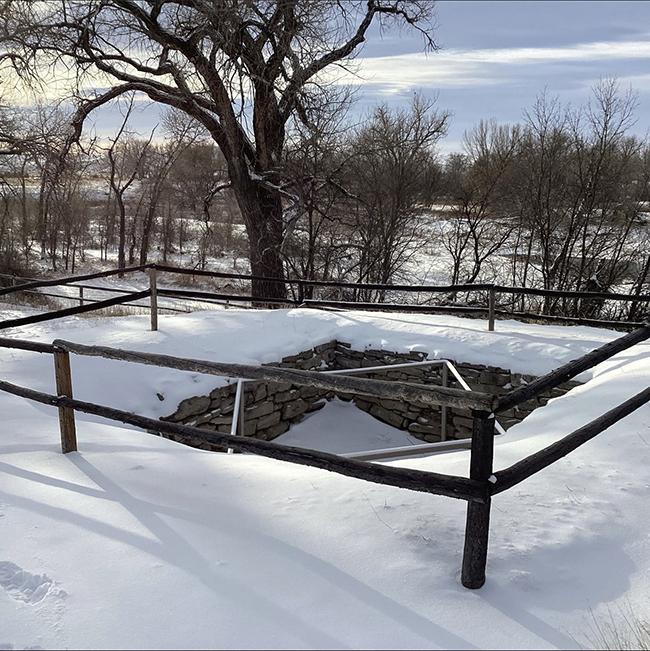
An ice house at Fort Laramie National Historic Site / National Park Service
During those frigid days when the snow would fall and thick ice forms on the Laramie and North Platte rivers, soldiers at Fort Laramie National Historic Site had the unenviable task of cutting and then stocking the ice houses. It was difficult, cold (no duh) work but the ice houses helped preserve food during the warmer days of summer. “With a little sawdust as insulation, these ice blocks could last almost until the first snowfall [of the next year].
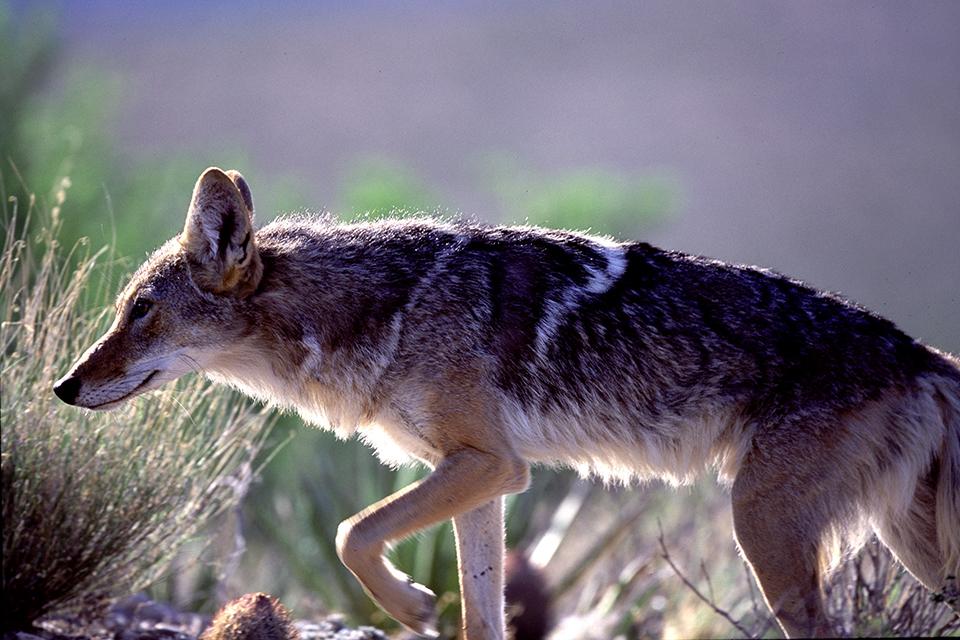
A backlit coyote, Big Bend National Park / National Park Service
If you’ve ever visited Big Bend National Park in Texas and been out roaming the desert at night, you might have been startled out of your starlit reverie by hearing a sudden chorus of yips and squeals and whines by a pack of coyotes. Coyotes use many vocalizations to communicate, are usually family units (coyotes mate for life), and are very intelligent, “sometimes working together to capture larger prey.” To learn more about the coyotes found in this national park, click here.
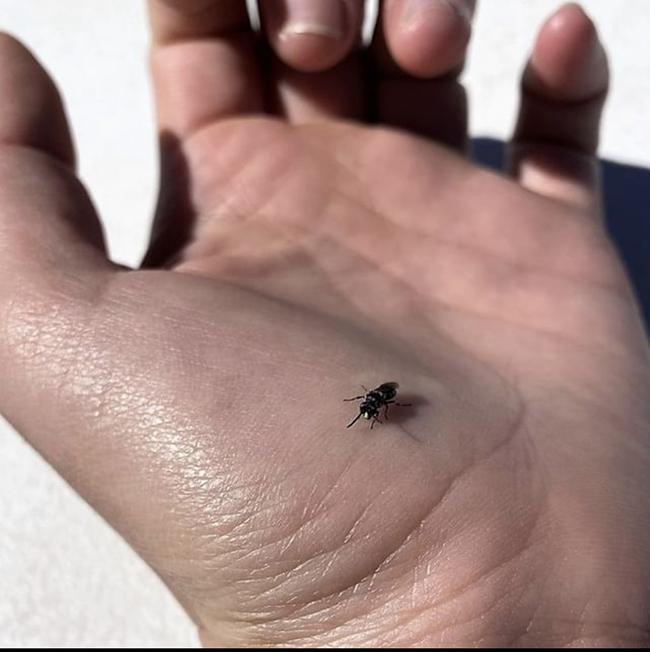
Yellow-faced bee, Haleakala National Park / National Park Service
“This tiny insect is a nalo meli maoli (Hawaiian yellow-faced bee), one of the most important pollinators at Haleakalā National Park. They play a key role in the crater ecosystem by pollinating the ‘āhinahina (Haleakalā silversword) as well as many other endangered plants within the park. This solitary bee species rarely stings …” To learn more about this bee and other insects, arachnids and arthropods found in this national park, click here.
Quiz Answers
1a True
If a bison’s tail is hanging down and switching naturally, then everything is hunky dory. But if a bison’s tail is standing straight up, then you’d better get out of the way! Actually, you should never be in a bison’s way in the first place. Watch them from a distance and use a telephoto lens to get a photo. To read more fun facts about North America’s largest mammal, click here.
2b
Saltpeter is an ingredient in gunpowder and “was mined from Mammoth Cave in Kentucky in the early 1800s.”
3c
According to an Instagram post for Bandelier National Monument (@bandeliernps), the reason for the cliff dwellings being only on one side of the Canyon is sunlight. “The south facing side of the Canyon gets more sunlight" and the cliff dwellings in the south=facing canyon wall are getting that sunlight. "This means that it freezes and thaws much faster than the north side, speeding up erosion and causing a straighter canyon edge with many more holes … Also, the three outer walls of cliff dwellings were typically made from adobe, or mud-baked clay. You can find this building material all over the southwest because it absorbs the heat of sunlight during the day and slowly releases it overnight. Cliff dwellings on the south-facing wall of the Canyon were therefore much warmer during the coldest, shortest days of the year.”
4d
While all of the above are synonyms for nest, redds “are nests dug by a female [salmon] by making rapid movements of her tail which dislodges the gravel. She makes a depression that is about as deep and as long as her body. Eggs and sperm are released into this redd where they will get buried by the gravel that she dislodges by digging upstream. She can release 1,500 or more eggs in each redd.”
5a True
Milkweed is toxic to eat, but it’s a primary food source for monarch butterflies. These butterflies “have developed an immunity to this toxicity… By ingesting the toxic plant in their larval stage, the monarch butterfly itself is also then toxic to insect eating predators.” To learn more about milkweed, click here.
6a True
Juniper berries are actually the female seed cones of the juniper tree, which is a conifer.
7c
“Great Smoky Mountains National Park is home to a population of about 1,900 black bears, with two black bears every square mile.”
8a
Cave formations seem to attract food-related nicknames, such as cave popcorn, cave hamburger, bacon rind, and, in this case, cave turnips. To learn more about the cave formations found in this national park, click here.
9b
According to an Instagram post by Point Reyes National Seashore (@pointreyesnps), coast redwoods don’t tolerate the salty sea spray, so the forests you see on Inverness Ridge “are dominated by Douglas-firs, Bishop pines, and other trees and shrubs … One “stand” (or group) of redwoods lives in the south-eastern corner of the seashore, protected from salt exposure by Inverness Ridge.”
10a True
Grant-Kohrs Ranch National Historic Site is still an active working ranch, “with about 90 head of cattle, six draft horses, two saddle horses, and about 20 chickens.” To learn more about the livestock at this ranch, click here.



Comments
Regarding the bison's tail, we were told by ranger that when the bison's tail was up he was either going to charge or disharge.
Yup. Either way, I'd stay out of the way ;)
In answer 3, an Instagram post for Bandelier National Monument is quoted.
I'm having trouble visualizing this. The south side of the canyon should have a view of the sky to the north, and should get more shade than the north side of the canyon. In particular, since Bandelier is north of the Tropic of Cancer, the noon sun will always be south of directly overhead. In summer, the setting (and rising) sun would be north of due west (and east), but summer would be after the freeze-thaw time of year. What am I misunderstanding?
Hi William - Aside from having to take that question up with Bandelier National Monument (@bandeliernps and their Dec 29, 2021 Instagram post), I looked at a map and decided I need to reword the question to make it a little clearer. It's the south or southeast facing canyon wall. So, the canyon wall is facing to the south, and the cliff dwelling openings within that south-facing canyon wall are facing to the south, too. I hope this makes it a little clearer.
Thanks, Rebecca. "South-facing" makes it a lot clearer.